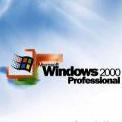Cixert last won the day on August 25 2023
Cixert had the most liked content!
About Cixert

Profile Information
-
OS
Windows 2000 Professional
Recent Profile Visitors
8,814 profile views
Cixert's Achievements
135
Reputation
-
Below I detail some peculiarities I've found in the most reliable tools. I completely rule out any others not mentioned. SPECIAL FEATURES OF OFFICIAL TOOLS Windows 2000 Disk Management: -Initializes MBR disks + 2 TiB -Creates MBR partitions larger than 2 TiB -Only aligns to sector 63 -Does not format FAT32 partitions larger than 32 GiB Windows XP Disk Management: -Initializes MBR disks + 2 TiB -Does not create MBR partitions larger than 2 TiB -Only aligns to sector 63 -Does not format FAT32 partitions larger than 32 GiB Windows Seven Disk Management: -Initializes MBR disks + 2 TiB -Does not create MBR partitions larger than 2 TiB -Only allows you to use the first 2 TiB of an MBR hard disk. DiskPart.exe in Windows 2000 -Does not exist. DiskPart.exe in XP -Does not initialize MBR disks +2 TiB -Does create partitions +2 TiB -Only aligns to sector 63. -Does not format any type of partition (it does not have the format command). -Requires exiting the program to work without errors with other programs, since the disks appear as mounted in it. DiskPart.exe in Windows Seven -Initializes MBR disks +2 TiB -Does not create MBR partitions larger than 2 TiB. -Requires exiting the program to work without errors with other programs, since the disks appear as mounted in it. Note: To use third-party programs, you must first exit Diskpart with the "exit" command, or the disks will remain mounted, generating errors in other programs. SPECIAL FEATURES OF THIRD-PARTY TOOLS Acronis Disk Director: -It is linked to the operating system's Disk Manager. -Partition alignment depends on the operating system; in XP, they are aligned to sector 63 and in Windows 7 to sector 256. -When expanding a FAT32 partition created with "MiniTool Partition Wizard 9.2" by using the free space left behind, the partition appears marked as "Damaged" in DiskGenius. -It does not support cluster sizes greater than 64 KB. DiskGenius: -It does not have a separate option to initialize the hard drive or leave it in its initial state. -When creating partitions on an MBR +2TB hard disk, without prior initialization, the drive letter is not visible in Windows XP, but it is visible in Windows 7 (it requires a separate initialization). EaseUS Partition Master -There is no separate option to initialize the hard drive or leave it in an initial state. -It does not allow creating +2 TiB partitions on MBR hard drives. FAT32 Format -Does not support cluster sizes greater than 64 KB Macrorit Partition Expert -Initializes MBR + 2 KB disks -Only aligns to sector 384. -There is a section that says "SSD partition alignment," expressed as a number plus the letter K, giving these options: Optimized, 4 KB, 8 KB, 16 KB, 32 KB, 64 KB, 128 KB, 256 KB, 512 KB. I don't know what its function is; any value selected on a hard drive with a 4096-byte logical sector results in the partition starting at sector 384. The help says: 4 KB is recommended for partitions smaller than 1 TB, 32 KB for 2 TB, and 64 KB for 3 TB and larger. https://macrorit.com/partition-magic-manager/how-to-align-ssd-partition.html I have found that either value gives the same result for the start and end sectors and cluster size on a mechanical disk. MiniTool Partition Wizard -There is no separate option to initialize the hard drive or leave it in its initial state. -When creating partitions, the alignment mode defaults to "Align to Cylinder" instead of "Align to MB." You must specify MB manually. (Align to cylinder is to sector 63 / Align to MB is to sector 256) -When creating partitions on an MBR +2TB hard disk, without prior initialization, the drive letter is not visible in Windows XP, but it is visible in Windows 7 (it requires a separate initialization). -Creating a single FAT32 partition on an 8 TB MBR hard drive leaves 9 MB of free space at the end, which is only visible with Acronis Disk Director 12.5 (if expanded with Acronis, the partition appears marked as "Damaged" in DiskGenius; formatting it with DiskGenius now shows it as OK). Paragon Partition Manager -There is no separate option to initialize the hard disk or leave it in an initial state. -Cluster sizes greater than 64 KB are not supported.
-
Cixert started following Procedure to create MBR Partitions + 2 TiB
-
I've found that some partitions larger than 2 TiB created from Windows Seven are not visible in XP. Perhaps this is why some users consider the limit for MBR partitions to be 2 TiB. The problem is that official tools don't allow this, and third-party tools that don't have options to initialize new hard disks operate strangely on hard drives with 4096 bytes logical sectors. These tools don't measure the hard drive capacity, but rather the number of sectors. This happens at least with Eassos Disk Genius and MiniTool Partition Wizard, these consider the following: - All hard drives up to 16 TiB are considered MBR unless these are first converted to GPT. -They work incorrectly with a +2TiB hard drive if it is not initialized as MBR, since by default these consider it already initialized as MBR. - If partitions smaller than 2 TiB are created, these may be visible in XP. - After creating partitions larger than 2 TiB on an uninitialized hard disk with these tools, they are not visible in Windows XP, but they are visible in Windows Seven. This is why I decided to write these instructions for creating partitions larger than 2 TiB from Windows XP. Incidentally, in the latest Windows Eleven update, Microsoft has increased the official limit for FAT32 partitions from 32 GiB to 2 TiB, although I have managed to create them from XP without any problems, up to 16 TiB. First, we need to connect the hard drive with an adapter that informs XP of a logical sector size of 4096 bytes, for example, a USB-SATA adapter whose firmware provides this feature. More info here: https://msfn.org/board/topic/186645-devices-list-compatibles-mbr-hard-disk-2tb/ STEPS: 1. Clean the disk with Macrorit Partition Expert using the "Clean Up Disk" option. (equivalent to leaving it in factory settings) Alternatively, use the "clean" command in DiskPart or Acronis Disk Director 12.5. 2. Initialize the disk with Macrorit Partition Expert using the "Initialize" option. Alternatively, initialize the hard drive from the Windows XP Disk Management or with the program Acronis Disk Director 12.5. 3. Create the partitions. For NTFS, create the partitions with Eassos Disk Genius 5.6.0.1565. For FAT32, create the partitions with Macrorit Partition Expert 8.6.0, if you find it appropriate to start the partitions at sector 384. Once created with Macrorit, these can be resized with DiskGenius to any size and sector start. (Acronis does not support cluster sizes greater than 64 KB, and MiniTool leaves a 9 KB space at the end of the partition.) 4. Verify that the partitions appear in My Computer. If these don't appear, check the hard drive for any errors in Windows XP's Disk Management: -If it doesn't show an error, restart the system so that the partitions appear in My Computer and in Disk Management. -If it clearly shows an error, repeat the steps using alternative programs or another version of the Windows operating system. -If you're using another version of Windows, verify that the partitions are visible in XP before writing data. 5. The alignment results can be obtained in XP with the "wmic partition get Name,StartingOffset,Size" command, taking the values and dividing by 4096, or using MiniTool Partition Wizard 10.3 Professional with the "verify alignment" option. Conclusion: Always initialize hard disks with a specific tool that allows it before working with them.
-

Partition size limit for FAT32, exFAT, and NTFS
Cixert replied to Cixert's topic in Hard Drive and Removable Media
The limits I've outlined are the practical limits where no data corruption exists in my tests, although the theoretical cluster limits may be different, I don't know the exact cause: Theoretical NTFS: 2^32 -1 cluster True NTFS: 2^32 -1 cluster Theoretical exFAT: 2^32 -1 cluster True exFAT: 2^28 clusters (little more) Theoretical FAT32: 2^28 -11 clusters True FAT32: 78.8~ million clusters On FAT32, I couldn't get past the 8 TiB partition limit, but I finally managed to do so with Macrorit Partition Expert. With this you can at least up to 16 TiB in FAT32, the real limit of FAT32 partitions according to Wikipedia. However, I can't run tests above 8 TiB to verify the true limits, as Macrorit limits FAT32 partitions to 2^26 clusters. There's some extraordinary news! Microsoft has increased the official FAT32 partition limit from 32 GiB to 2 TiB in the latest version of Windows. I haven't tested this, so I don't know what cluster size it assigns. -
@Andalu is referring to file corruption on his system due to the PAE driver and the GPT loader. The correct version of the GPT loader refers to the fact that without the PAE driver, other versions of the Paragon loader also cause file corruption above 2 TiB. At this time, there is no known PAE driver that will not cause corruption above 2 TiB with any version of Paragon GPT Loader.
-
Good info, if you manage to port it and get it working, please report.
-
Sorry. I haven't tried booting an NT 5.x operating system from a GPT disk. It's best that you follow this information... https://msfn.org/board/topic/181911-read-gpt-hard-disk-on-windows-xp-solved/page/31/#findComment-1279892
-
I'm afraid that with PAE the only way to overcome 4294967296 sectors of 512 bytes (2 TIB) is to modify the Paragon GPT Loader or creating a new GPT Loader.
-
That PAE that you have activated in XP SP3 is not functional. Microsoft disables PAE in XP SP2 , so the patches were created, with the intention of enabling it again.
-
I tell you once again that all this you suggest has already been tested and does not work. The solutions are written in the first entry of this post in which we are. The method that works we have already described. Please read the links published in the first post and you will find explanations and solutions. Regarding PAE and Windows 2000 there is no solution yet, so it is not published anywhere else.
-
Increasing the cluster size does not allow you to exceed the 2 TiB limit in either GPT or MBR. In MBR, to exceed this limit up to 16 TiB, you must increase the logical sector size from 512 bytes to 4096 bytes. This requires hardware that performs the conversion in its firmware, which is not currently possible with IDE mode, much less with the Paragon GPT Loader. Here is a list of devices that support this with MBR. https://msfn.org/board/topic/186645-devices-list-compatibles-mbr-hard-disk-2tb
-
The PAE limit was commented by @Andalu on January 18, 2025 https://msfn.org/board/topic/181911-read-gpt-hard-disk-on-windows-xp-solved/page/27/#findComment-1276911 I ran the tests with @Dibya Path PAE and confirmed the results in the following posts. If you know of a PAE patch that works with GPT, please comment.
-
Hi, we've been working on these experiments for a while now. The +3TB solution from Gigabyte, Seagate, and others involves creating an additional virtual drive for capacities above 2 TiB. I don't recommend following the final link you posted to the Chinese solutions from 2011. That link recommends following all the incorrect steps we've already ruled out, which limit GPT to 2 TiB. Following those steps leads to data corruption starting at 2 TiB.
-
@Andalu I've found the reason why my partitions disappear when I start Disk Management in Windows XP. I initialize the hard disk as GPT, and the system automatically creates a partition called MSR. Since I don't want the characteristics of that partition, just like Bitlocker, I deleted it before creating new GPT partitions. Deleting the MSR partition isn't a problem in NT6-10, but in XP, if it's deleted, all GPT partitions disappear when I start Disk Management.
-
You must follow the exact instructions I provided in the links in the first post. https://msfn.org/board/topic/181911-read-gpt-hard-disk-on-windows-xp-solved/ The version of Paragon GPT you need is 8.0.1.0, which is included in Paragon Partition Manager 15 Professional. It won't work properly if you're using an older version, and you won't be able to exceed 2 TiB if you're using a version higher than 8.0.1.0. Although solutions have also been discussed for this, the easiest way is to use the version I mentioned. It has also been mentioned that the system doesn't work with PAE enabled!!! There is currently no solution for this. With PAE, the limit without data corruption is 2 TiB. Without PAE, the theoretical limit is 256 TiB for SATA. Working with data disks initialized as GPT is solved. I have no experience with GPT boot disks in Windows XP. But @reboot12 recently claims to have succeeded. https://msfn.org/board/topic/181911-read-gpt-hard-disk-on-windows-xp-solved/page/31/#findComment-1279892
-
Yes, I see it now in pag 2-20. PCI Express x16 graphic card inserted to the onboard PCI Express x16 slot may run only at x1 speed (Intel spec.). Make sure the installed PCI Express x16 graphic card support the downgrade x1 speed before you make a purchase. I don't know what the Intel specification is. I asked on Google Gemini (I left chatGPT for being a liar) and it says that Intel chipsets of that time only support 1x speed. I find that strange; I have an Intel Xeon i3000 (Mukilteo-2) (3000 series) (ICH7). GPU-Z and Aida64 say the speed is 16x; I'll try to run a more in-depth test. As a curiosity, I'll mention that the video card's bandwidth is 32-bit, and that when connected to Windows 2000-XP, the available RAM in Windows is limited to 2 GiB. While I don't have this limitation in Windows Seven and 10 x64.





